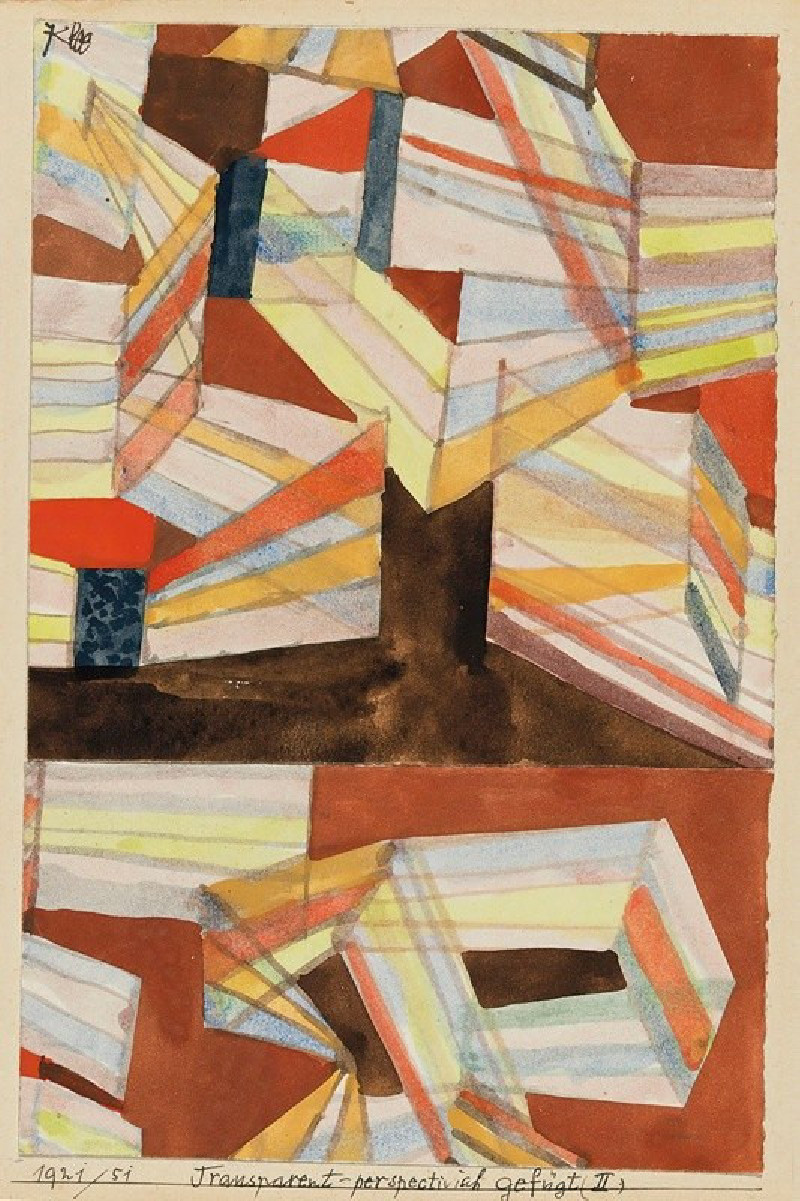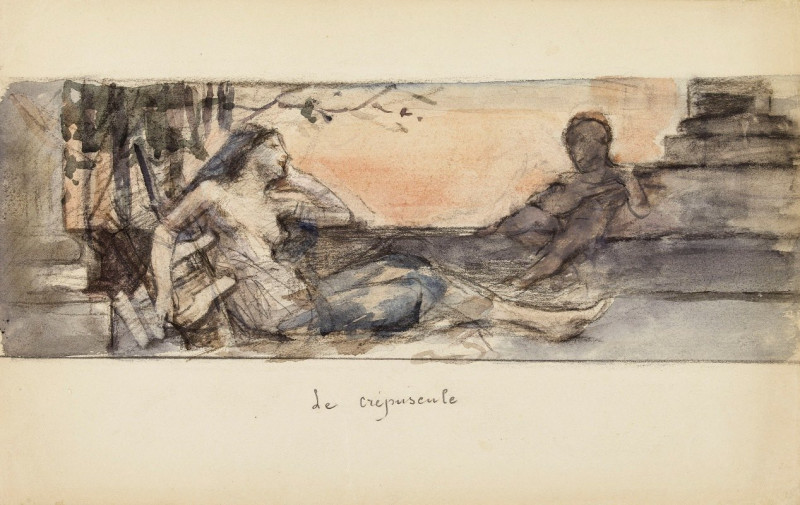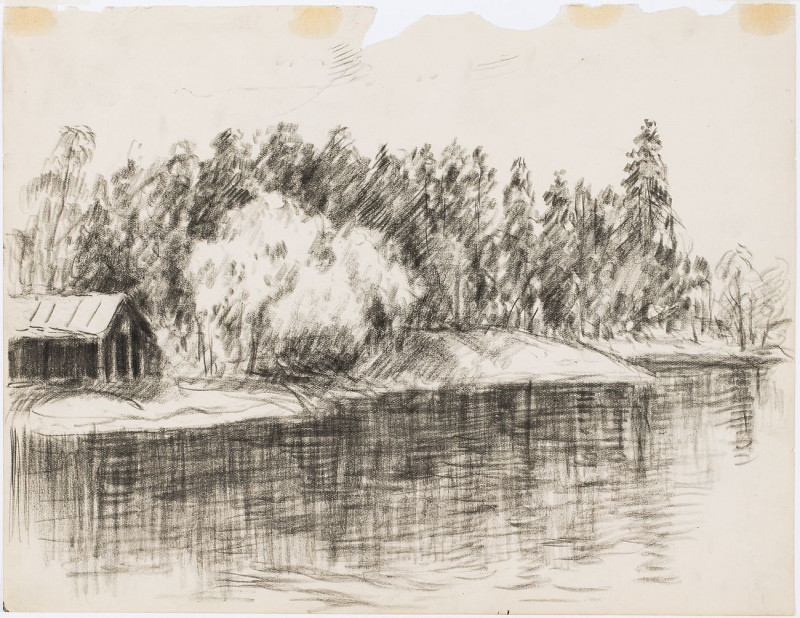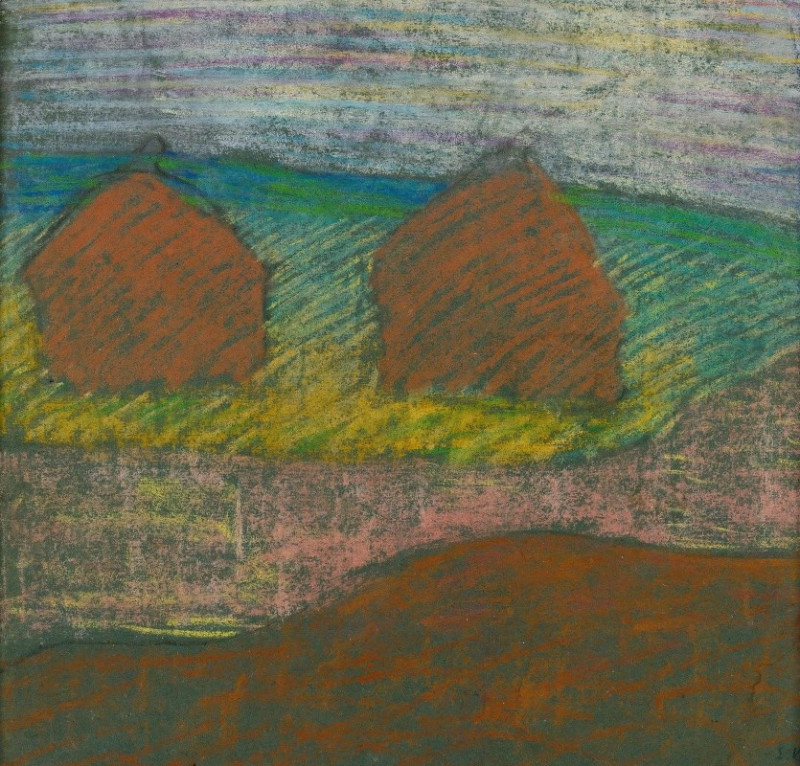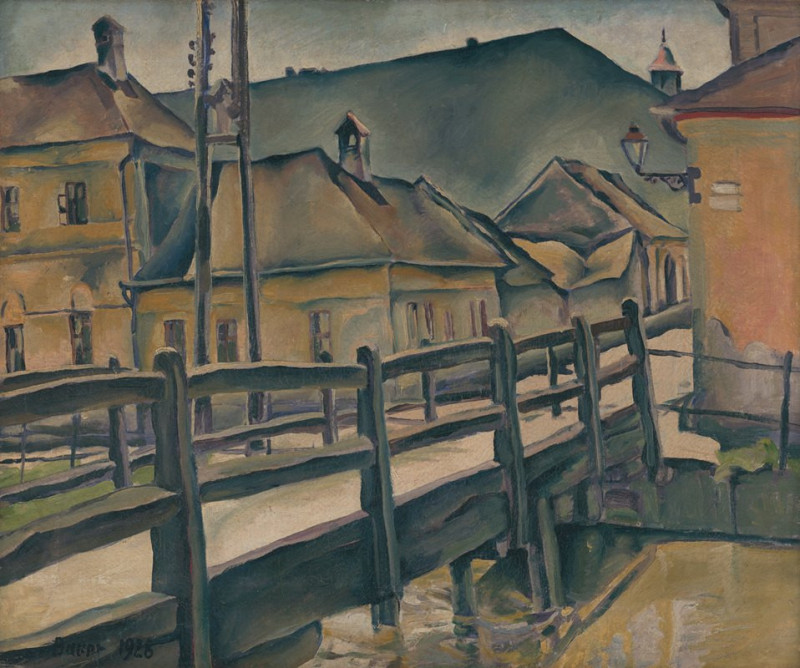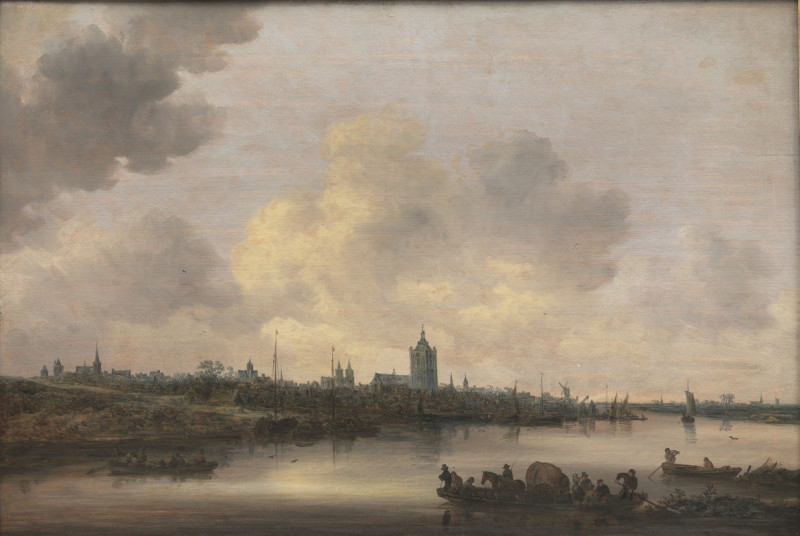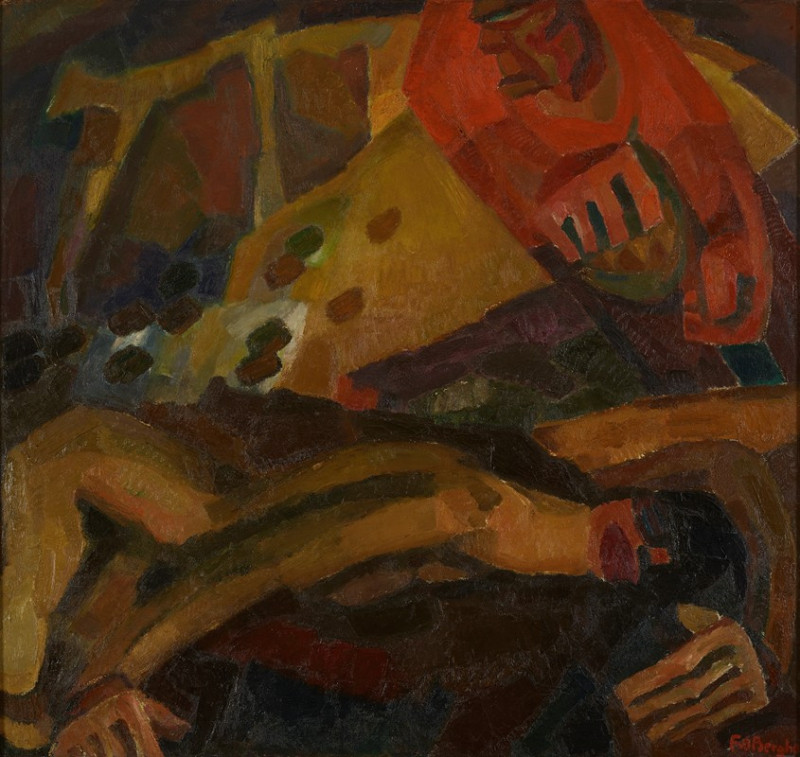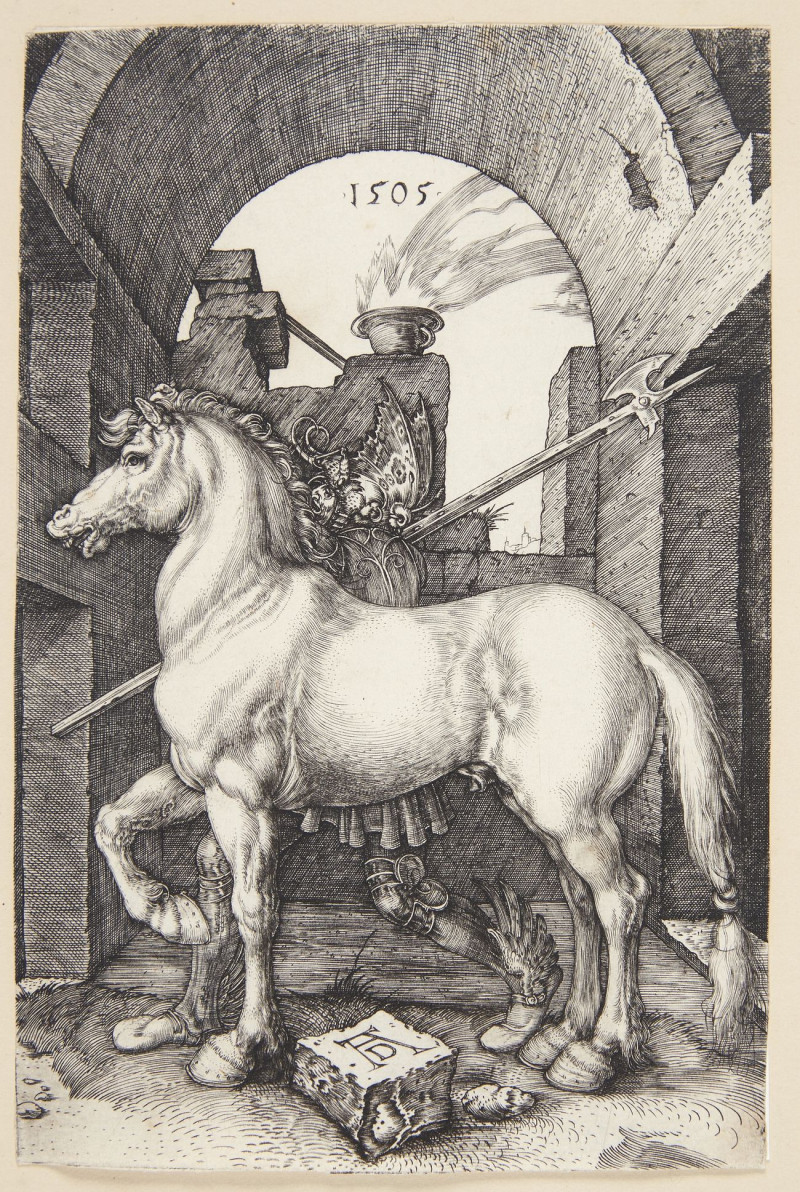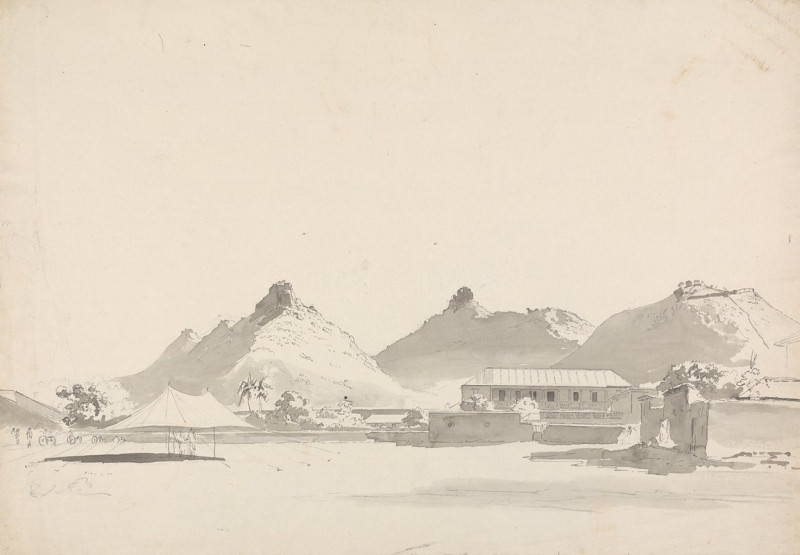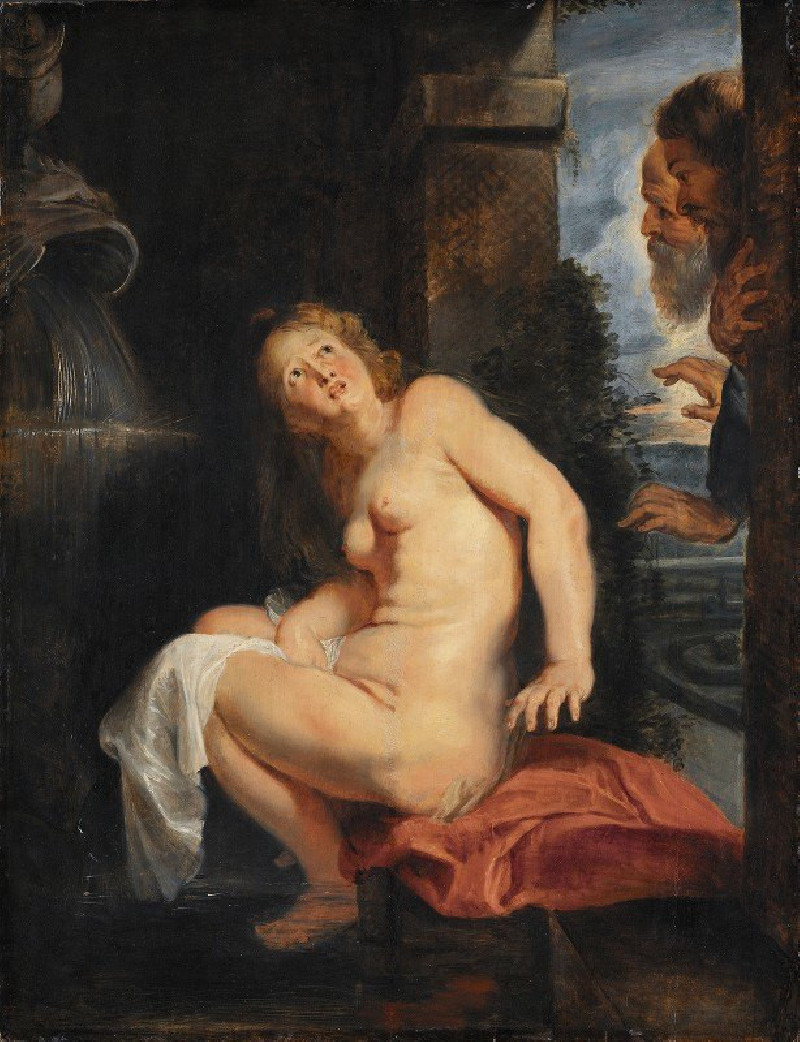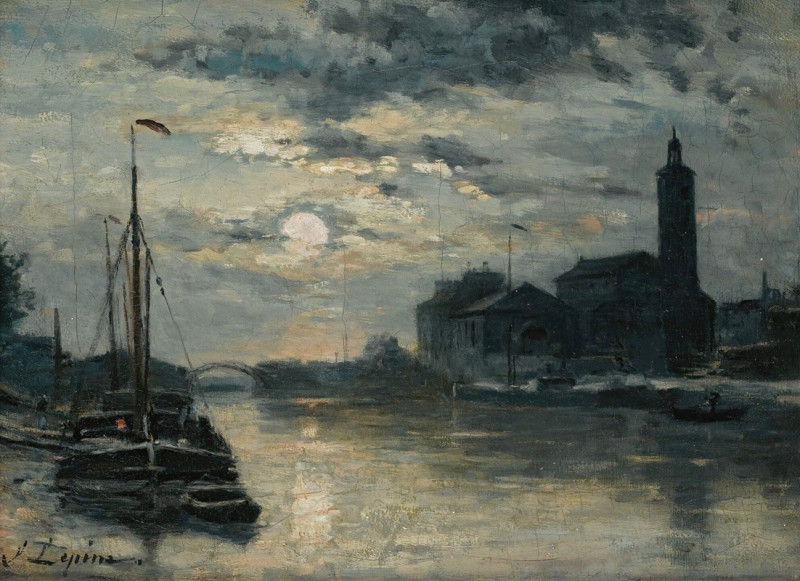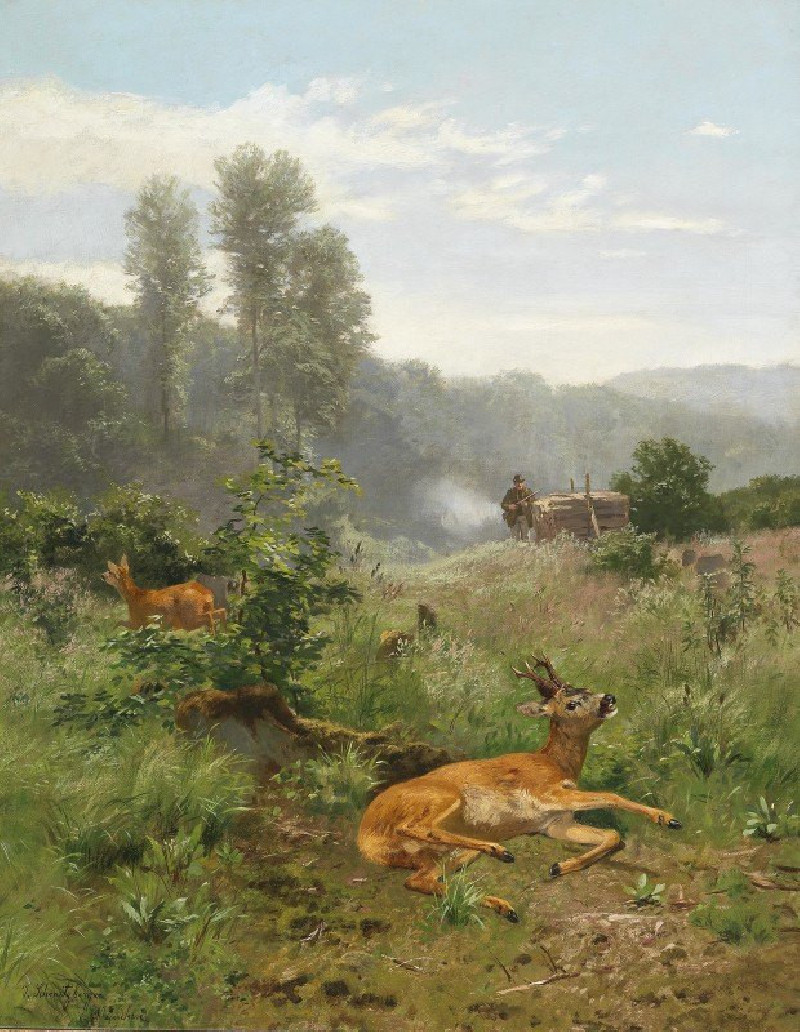Transparent-perspectivisch gefügt (II.) (1921)
Technique: Giclée quality print
Recommended by our customers
More about this artwork
Discover the enchanting layers of Paul Klee's "Transparent-perspectivisch gefügt (II)," crafted in 1921. This remarkable painting is a vivid exploration of color and geometric abstraction, underpinned by Klee's deep interest in transparency and perspective. Strikingly, the piece juxtaposes various shapes and angles, where each segment and line contributes to a complex network that challenges traditional forms.In "Transparent-perspectivisch gefügt (II)," uneven blocks and stripes intersect, creating a dynamic visual puzzle. The very title suggests a composition that plays with space and depth, using transparency as a mechanism to propose a multifaceted viewpoint. Through washes of delicate colors overlaid by bold, muted lines, Klee expertly captures an almost architectural form, brought to life through his characteristic whimsical style. This painting not only reflects Klee’s mastery over color theory and innovative artistic techniques but also embodies his perpetual quest to depict the invisible dimensions of the natural world.
Delivery
Returns
Paul Klee was a Swiss-born German artist. His highly individual style was influenced by movements in art that included expressionism, cubism, and surrealism. Klee was a natural draftsman who experimented with and eventually deeply explored color theory, writing about it extensively; his lectures Writings on Form and Design Theory (Schriften zur Form und Gestaltungslehre), published in English as the Paul Klee Notebooks, are held to be as important for modern art as Leonardo da Vinci's A Treatise on Painting for the Renaissance.

